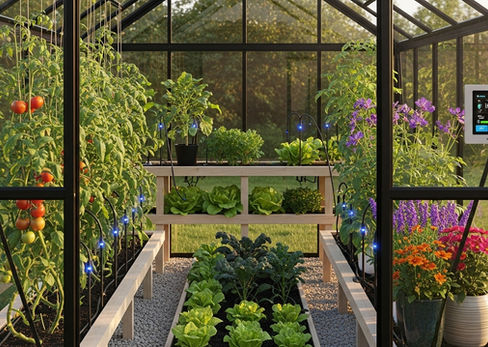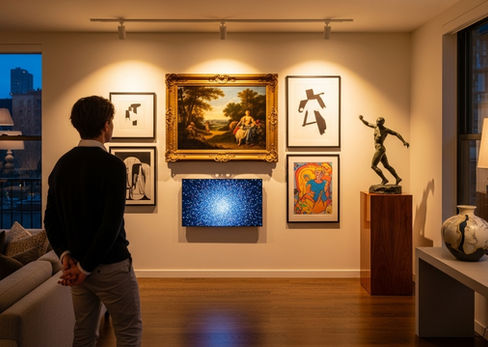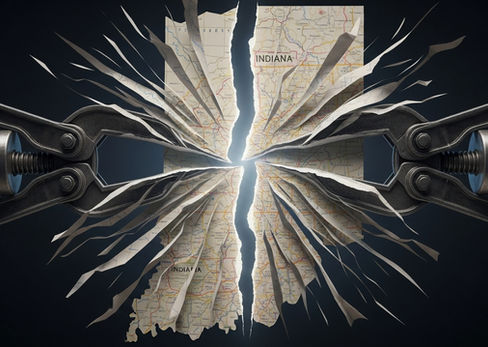Patna Suspension Bridge: Lakshman Jhula-Inspired Crossing to Transform the City
- THE MAG POST

- Aug 24
- 7 min read

Patna suspension bridge is poised to become a landmark that stitches together faith, travel, and urban life along the Punpun river. As Patna’s capital readies for a Lakshman Jhula-inspired crossing near the pind-daan site, residents glimpse a future where pilgrims, commuters, and visitors cross with ease rather than endure delays. The project, green-lit by the Nitish Kumar cabinet, spans about 320 meters with an 11.5-meter corridor, while 115-meter approaches on both banks promise safe, swift access. Priced at approximately ₹83 crore, the bridge promises not only convenience but a new tourism identity for the city, weaving heritage, engineering, and commerce into a coherent corridor.
Beyond mere passage, the Patna suspension bridge signals a broader shift in how infrastructure blends with culture and daily life. Engineers emphasize resilient materials, vibration control, and thoughtful sightlines that respect the river’s ecology and the pilgrims' rituals. Local businesses anticipate a halo effect—from eateries to street photography and guided tours—that could sharpen Patna’s competitive edge among regional destinations. The design, while ambitious, also invites residents to imagine safer crossings, improved flood resilience, and a pedestrian-friendly artery that stitches together communities while preserving the river’s reverence.
Patna suspension bridge is poised to become a landmark that stitches together faith, travel, and urban life along the Punpun river. As Patna’s capital readies for a Lakshman Jhula-inspired crossing near the pind-daan site, residents glimpse a future where pilgrims, commuters, and visitors cross with ease rather than endure delays. The project, green-lit by the Nitish Kumar cabinet, spans about 320 meters with an 11.5-meter corridor, while 115-meter approaches on both banks promise safe, swift access. Priced at approximately ₹83 crore, the bridge promises not only convenience but a new tourism identity for the city, weaving heritage, engineering, and commerce into a coherent corridor.
Beyond mere passage, the Patna suspension bridge signals a broader shift in how infrastructure blends with culture and daily life. Engineers emphasize resilient materials, vibration control, and thoughtful sightlines that respect the river’s ecology and the pilgrims' rituals. Local businesses anticipate a halo effect—from eateries to street photography and guided tours—that could sharpen Patna’s competitive edge among regional destinations. The design, while ambitious, also invites residents to imagine safer crossings, improved flood resilience, and a pedestrian-friendly artery that stitches together communities while preserving the river’s reverence.
Patna Suspension Bridge: Design, Scope, and Engineering Feats
The Lakshman Jhula-inspired motif lends the project a timeless silhouette while housing modern engineering that can withstand the region’s weather and usage. The 320-meter overall length, with an 11.5-meter carriageway, creates a broad, reassuring path for pedestrians, pilgrims, and light vehicles alike. The two 115-meter approaches enhance accessibility and reduce congestion at the riverbank fronts, allowing a smooth, uninterrupted flow from town streets to the elevated deck. This blend of aesthetics and functionality is deliberate, aiming to honor cultural memory while delivering tangible daily benefits for commuters and visitors.
Engineering teams are integrating durability and safety through corrosion-resistant steel, tested anchorage systems, and advanced cable-suspension technology. Thoughtful lighting, barrier designs, and ramp accessibility ensure comfort for elders, children, and families during pind-daan rites or sunset strolls. The overall concept balances visual appeal with practical maintenance considerations, facilitating routine inspections and long-term upkeep. In essence, the bridge aspires to be a durable civic asset that remains graceful and reliable for decades to come.
Budget, Scope, and Timelines
With a financial envelope around ₹83 crore, the Patna suspension bridge project embodies a careful calibration of ambition, risk, and value. The cabinet’s approval initiates the formal design prompts, tender processes, and essential riverbed assessments that underpin safe construction along the Punpun corridor. The stated scope—a 320-meter span, an 11.5-meter roadway, and 115-meter approaches on both sides—reflects a measured approach to connect riverside neighbourhoods while preserving surrounding ecosystems and ceremonial spaces. Although exact procurement schedules depend on bids, the plan prioritizes phased progress to minimize disruption to pilgrims and locals alike.
Constructors and authorities anticipate challenges typical of large riveric projects, including seasonal river dynamics and environmental safeguards. The governance framework, anchored in the Nitish Kumar-led cabinet, seeks timely approvals and transparent communication with communities. By aligning budgetary commitments with clear milestones, the project aims to deliver a resilient, revenue-generating riverfront asset that shortens travel times, supports local commerce, and elevates Patna’s status as a heritage-inflected yet forward-looking city.
Strategic Location and Cultural Context
A striking riverfront crossing can redefine a city’s everyday rhythms, and the Punpun corridor near the pind-daan site sits at a nexus of devotion, travel, and urban life. Placed adjacent to the existing railway bridge, the new suspension span promises easier transfers for pilgrims and residents, transforming a potential bottleneck into a seamless, symbolic link. The 115-meter approaches on either bank are designed to offer gentle gradients, broad sidewalks, and ample sightlines toward both the river and the surrounding historic precincts, enhancing safety without compromising the landscape’s sacred character.
Beyond logistics, the project speaks to Patna’s evolving identity as a riverine metropolis that can harmonize modern infrastructure with spiritual geography. Local guides, artisans, and service providers anticipate a range of opportunities—from cultural tours to riverfront crafts—increased visitor footfall. The Lakshman Jhula-inspired design also resonates with broader heritage narratives across northern riverfronts, inviting communities to celebrate the river’s cultural memory while embracing contemporary amenities. In this sense, the bridge becomes a stage for storytelling, economic renewal, and shared pride in the city’s future.
Economic Uplift: Tourism, Pilgrimage, and Local Businesses
The smoother access created by the Patna suspension bridge is expected to generate a palpable economic ripple, especially for the pind-daan precinct and Punpun’s riverbanks. Pilgrims, photographers, and casual visitors may linger longer, fueling spending at local eateries, shops, and informal transport services. This amplified footfall can also empower small entrepreneurs to showcase riverine crafts, regional snacks, and guided experiences that connect devotion with everyday life. In short, the bridge becomes a catalyst for a more vibrant riverside economy with broader participation from the community.
Additionally, the bridge’s unique silhouette offers a powerful branding opportunity that Patna can leverage in regional tourism promotions. As sunrise light glints off the cables and the city’s skyline frames the river, images and stories shared online can elevate Patna’s profile as a heritage-infused destination. The result is not merely a crossing but a commercial ecosystem—hotels, restaurants, and service providers positioned to benefit from sustained visitor interest and a renewed riverfront identity that respects tradition while inviting modern commerce.
Engineering, Safety, and Community Engagement
From a technical vantage point, the Patna suspension bridge relies on a proven cable-supported framework, with careful attention to wind effects, river dynamics, and long-term maintenance. The deck, anchorage, and suspension elements are designed to enable straightforward inspections and predictable performance across seasons. Safety measures—adequate lighting, secure handrails, and accessible ramps—prioritize inclusive use, ensuring that elders, families, and those with ceremonial items experience comfort and confidence when crossing during busy periods or ritual times.
Community engagement is central to the project’s ethos. Authorities plan public consultations, heritage signage, and interpretive materials that explain the bridge’s design choices and cultural significance. By keeping residents informed and involved, the project aims to build trust, address concerns about ecology and traffic management, and cultivate a shared sense of ownership. The result is a riverfront landmark that serves daily life, preserves sacred spaces, and invites ongoing conversation about Patna’s evolving urban landscape.
Policy, Budget, and Governance: Steering the Project
Policy alignment and cross-agency coordination anchor the initiative, with the Nitish Kumar cabinet providing the formal green light for detailed design, procurement, and phased construction. Transport, archaeology, and river-management agencies coordinate to minimize disruption to existing crossings while safeguarding heritage assets and ecological integrity. Transparent progress updates and local liaison channels help maintain momentum and public confidence throughout the build.
Budget management balances upfront capital costs with long-term maintenance responsibilities, ensuring the bridge remains a durable asset rather than a financial liability. Contingencies, risk assessments, and staged procurement are part of a disciplined approach intended to keep milestones on track even amid monsoons or supply chain delays. In essence, governance structures translate bold ambition into a safe, sustainable riverfront gateway that can deliver measurable benefits for years to come.
Key Takeaways for the Patna Suspension Bridge Project
The Patna suspension bridge envisions a future where tradition and modern mobility meet, turning a sacred riverside into a well-connected civic space. By combining Lakshman Jhula-inspired aesthetics with contemporary engineering, it promises safer crossing, enhanced tourism, and broader economic opportunities for Patna’s neighborhoods on both banks.
What the Project Promises for Patna
Conceptually, the bridge offers safer, quicker river crossings, reduced congestion, and a platform for heritage-inspired branding that can attract visitors. Practically, it supports better pilgrimage logistics, spurs small business growth, and elevates the riverfront as a focal point of urban life. The anticipated 320-meter span with an 11.5-meter carriageway provides versatility for pedestrians and limited traffic while preserving the river’s cultural sanctity.
From a long-term perspective, the project demonstrates how culturally resonant design can coexist with state-of-the-art infrastructure, fostering community pride and resilience. The procurement and governance framework, if executed with transparency and community input, can serve as a model for similar ventures across the region, marrying heritage with modernity in a way that benefits both residents and visitors.
Lessons for Future Infrastructure Ventures
Key takeaways include the importance of early stakeholder engagement, rigorous risk management, and a phased implementation approach that minimizes disruption. Equally important is maintaining a clear focus on accessibility, maintenance planning, and environmental safeguards to ensure the asset remains valuable beyond its initial construction phase. The Patna example suggests that infrastructure projects can be bold and efficient when cultural context, technical rigor, and community needs are integrated from the outset.
Finally, the project highlights how branding and storytelling around infrastructure can amplify local identity. By weaving narratives of devotion, riverside life, and modern mobility, such ventures can attract talent, investment, and visitors while strengthening the social fabric that sustains a city. In this sense, the Patna suspension bridge is not just a crossing; it is a catalyst for shared progress and continued learning for future projects.
Aspect | Highlights |
Bridge Overview | Patna suspension bridge, 320 m span, 11.5 m carriageway, approx ₹83 crore |
Location & Access | Punpun river near pind-daan site; 115 m approaches on both banks |
Design Inspiration | Lakshman Jhula-inspired suspension design |
Economic Impact | Expected tourism, pilgrimage ease, and local business boost |
Safety & Accessibility | Enhanced lighting, ramps, and pedestrian-friendly features |
Governance | Cabinet approval; phased procurement and monitoring |

















































Comments